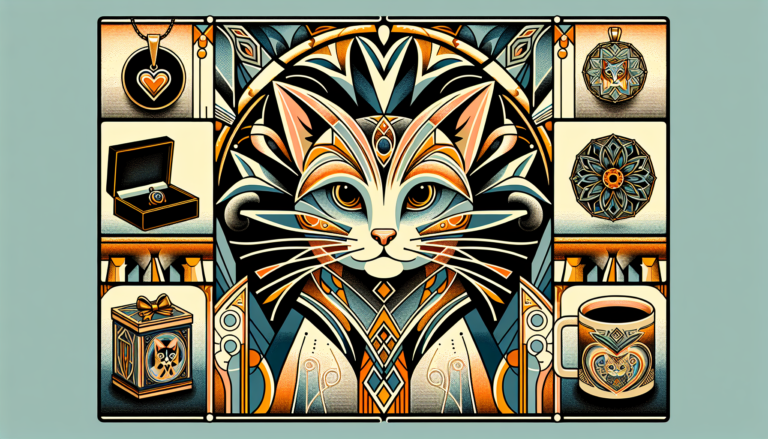Cats Crying: Unraveling the Mystery of Feline Vocalizations
Welcome to our jewelry blog, where we explore the wonders of feline behavior and how it connects with everyday life, including the beauty of cat-themed earrings. Understanding why cats crying can be a frequent occurrence is essential for any cat owner. Whether it’s due to seeking attention, discomfort, or changes in their environment, knowing how to interpret these sounds can help you care for your beloved pet. Let’s embark on this journey to understand what your feline friend might be expressing and how to address it appropriately.
Cats Crying: What Lies Beneath
Cats are fascinating creatures with complex communication methods. Their crying, or vocalization, can be seen as a language that reflects their emotions, needs, and even health status. Interpreting these sounds effectively can improve your relationship with your furry companion.
Attention-Seeking Cats Crying
When your cat follows you around, vocalizing loudly, it’s often a plea for attention. Cats, being sociable animals, adore interaction and may meow for playtime, food, or a scratch behind the ears. Establishing set playtimes and feeding schedules can mitigate these vocalizations by fulfilling your cat’s social needs efficiently.
Pain or Discomfort as Reasons for Cats Crying
A cat that cries persistently with signs such as a hunched posture or decreased mobility could be in pain. Such vocalizations might signal underlying health problems like infections or dental issues. It’s critical to monitor other symptoms and consult a veterinarian promptly to ensure appropriate care.
Emotional Causes of Cats Crying
Cats may vocalize excessively due to emotional distress, similar to humans facing anxiety or loneliness. Situational changes like a new environment or the absence of a companion can trigger heightened vocalization. Creating a safe space with comforting elements like pheromone diffusers can alleviate such anxiety.
The Role of Hunger: Cats Crying as a Feed Me Signal
Inconsistent feeding schedules can lead your cat to vocalize their hunger. Establish routine meal times with the help of automatic feeders to ensure your cat’s dietary needs are consistently met. Offering mentally stimulating food puzzles can transform feeding times into engaging activities.
Environmental Triggers for Cats Crying
The environment significantly impacts a cat’s vocal behavior. Whether moving house, introducing a new pet, or encountering loud noises, any change can provoke cats crying. Mitigate these stresses by providing a familiar and calm environment and maintaining regular routines.
Cats Crying Linked to Health and Environmental Factors
Our feline friends rely heavily on their surroundings for comfort. Disruptions or new elements can stress and provoke increased vocalization. Learn to recognize these triggers to ensure your cat’s well-being.
Behavioral and Social Considerations
Cats also cry due to behavioral challenges or unmet social needs. Puzzle toys, interactive games, and plenty of social interaction can turn monotonous days into playful, fulfilling experiences, curbing excessive meowing behavior.
Diet and Nutrition
Diet is a critical factor in a cat’s health and happiness. Ensure your cat receives balanced nutrition tailored to their needs. If dietary concerns arise, consult your veterinarian to address nutritional deficits or food sensitivities.
Solutions to Manage Cats Crying
Here’s how you can address and reduce unwanted vocalization:
Training with Positive Reinforcement
Positive reinforcement encourages desired behaviors. Reward quiet and calm behavior with treats, affection, or playtime. This approach fosters a harmonious environment for both you and your cat.
Creating a Nurturing Environment
A serene, nurturing space with hiding spots, elevated areas, and cozy bedding can significantly reduce stress-induced meowing. Use calming aids like pheromone diffusers to enhance comfort.
Regular Health Check-Ups
Regular veterinary visits are essential for monitoring your cat’s health. Address medical conditions early to prevent pain-related cats crying and ensure your cat’s continued health and happiness.
Mental Engagement and Physical Activity
Providing a variety of toys and embracing interactive play encourages physical exercise and mental engagement, helping reduce excessive meowing. Keep toys fresh by regularly rotating them to sustain interest.
Visiting the Vet: When to Seek Help
If your cat’s crying becomes persistent or accompanies unusual behavior or physical symptoms, it’s time to seek professional advice. Timely veterinary intervention can diagnose and address health issues efficiently.
Remember, understanding your cat’s crying patterns helps in nurturing a better bond with them and ensuring their happiness and health. Visit our website for more resources on cat care and explore our delightful range of cat-themed jewelry, perfect for feline enthusiasts.
For any queries or to explore our distinctive jewelry collection, including elegant silver pieces, contact us at [email protected] or call (800) 343-1604.

